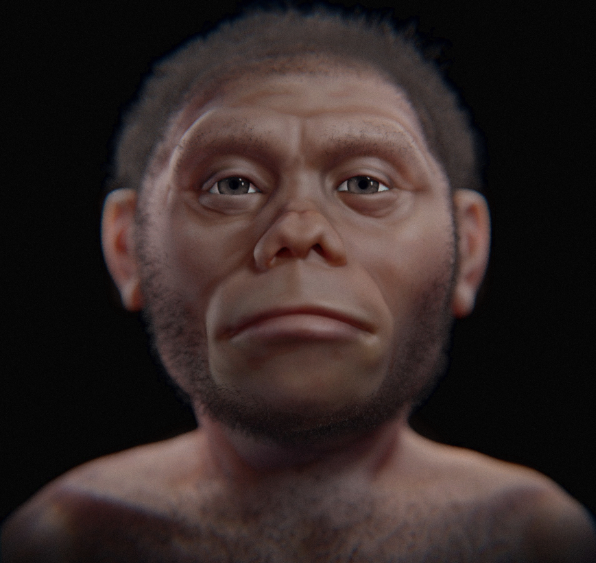Scientists from Arc-Team in Brazil and Italy have successfully created a 3D reconstruction of the 'Hobbit,' a species known as Homo floresiensis, which lived approximately 18,000 years ago.
The Homo floresiensis skeleton, named LB1 (Liang Bua 1), was discovered in Liang Bua Cave on Flores Island, Indonesia, in 2003. The individual was a short-statured female, measuring about 1.06 meters tall, with a brain volume between 380 and 417 cm³.
The classification of Homo floresiensis as a new species sparked significant scientific interest and debate. While some researchers argued that the unique characteristics of the species indicated a separate lineage, others proposed that it could be a Homo sapiens individual with syndromes and microcephaly.

Facial Reconstruction
Since the discovery of Homo floresiensis, various facial approximations of the LB1 skull have been presented using different techniques. Some approaches focused on archaic elements of the bones, while others incorporated modern human data to create the face of the 'Flower Hobbit.'
In 2013 and 2014, the team behind Arc-Team worked on two exhibitions related to human evolution, showcasing their work on facial reconstructions. The skull of Homo floresiensis served as the basis for creating two different faces using digital sculpture and anatomical deformation techniques.
Over the years, the team has continued to update their work, allowing for a comparison of approximations and the evolution of employed techniques. While previous examples primarily focused on Homo sapiens individuals, this project marks their first revisit to a different species.
The facial reconstruction process employed forensic facial approximation, a technique used to recognize individuals by reconstructing their faces from skulls when other identification methods are limited.
The team relied on the approach known as anatomical deformation, following similar methods outlined in previous studies.
Objective and Artistic Approach
Using Blender 3D software and the OrtogOnBlender add-on, the researchers conducted the modeling process. Two approaches were explored: an objective one, closely linked to anatomical aspects, and a more artistic approach.
The objective method resulted in a grayscale, anatomically coherent face, considering data collected from CT scans. Since the exact skin, fur, and hair color remains unknown, the model approximates the species' facial features.
The anatomical deformation technique proved valuable in approximating the facial features of extinct hominids like Homo floresiensis, compensating for the absence of soft tissue thickness markers specific to the species.
By creating a model that combines elements from different species through the interpolation of two modern analogs, the researchers aimed to offer the public a more coherent representation of the 'Hobbit's' face, as evident in the LB1 skull.
The team has made their approaches and works, including those from previous exhibitions, available on the Wikimedia Commons platform under a Creative Commons license. This allows for accessibility and encourages further exploration and discussion within the scientific community.
The successful 3D reconstruction of the 'Hobbit' from 18,000 years ago provides valuable insights into the appearance of Homo floresiensis, contributing to our understanding of this unique species that once inhabited Flores Island.


![Apple Watch Series 10 [GPS 42mm]](https://d.techtimes.com/en/full/453899/apple-watch-series-10-gps-42mm.jpg?w=184&h=103&f=9fb3c2ea2db928c663d1d2eadbcb3e52)


